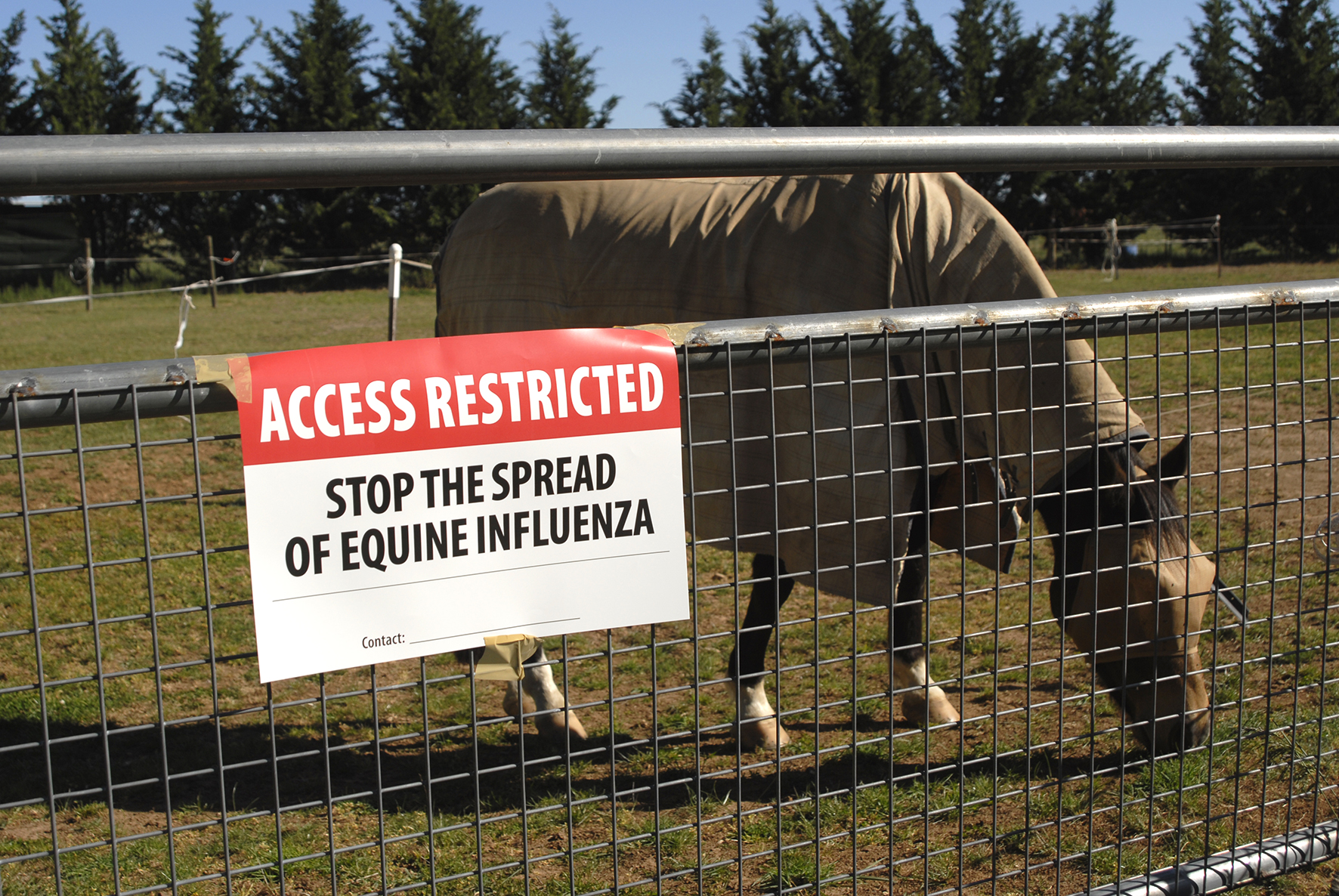
NSW celebrates EI free status, ten years on
28 Aug 2017

The NSW Department of Primary Industries (DPI) is celebrating the success of eradicating the largest exotic disease outbreak in Australia’s history – equine influenza – which was discovered in NSW 10 years ago.
DPI Deputy Director General of Biosecurity and Food Safety, Dr Bruce Christie, said DPI were the lead agency in the NSW eradication campaign on equine influenza, which at its peak infected 47,000 horses on 5943 properties in NSW.
“It is 10 years since equine influenza was first detected in NSW and then Queensland and while we are celebrating our success, DPI continues to ensure NSW retains its tough biosecurity measures,” Dr Christie said.
“Australia did what other countries couldn’t do – eradicate this disease. It still remains endemic in Europe (except for Iceland), North and South America.
“The campaign in NSW was led by DPI and it was the largest of its type ever undertaken in Australia, using the latest laboratory, vaccine, surveillance, mapping and communication technologies.
“I would like to congratulate the 2000 staff involved who worked at state and local disease centres, nine forward command posts, 14 local vaccine centres and on affected properties.
“I would also like to thank the 1500 people from the horse industry who played a pivotal role using their experience and administrative skills as part of the control operations as well as the individual horse owners who cooperated with the control program.
“The impact of containing this outbreak cannot be emphasised enough – it would have caused devastating impacts on individual horse owners, the horse industry and associated sectors, as well as other economic impacts across NSW.”
Equine influenza (EI) is an acute, highly contagious, viral disease that can cause rapidly spreading outbreaks of respiratory disease in susceptible populations of horses.
Most horses recover within a few of weeks if they are given good care and rest, however in rare cases it can cause deaths in young foals or old horses.
“Success in the control of EI was due to DPI’s rapid response, our collaboration with Biosecurity Queensland, cooperation from the horse industry and all associated sectors, locking down of all horse movements, quarantining infected properties and introducing zoning, which allowed some normal activities such as breeding to go ahead,” Dr Christie said.
“NSW remains EI-free, thanks to horse owners, industry and the public whose assistance during the 2007-08 outbreak allowed NSW to achieve a monumental victory over this disease.
“Under the new Biosecurity Act, biosecurity is a shared responsibility and all members of the public have a duty to protect themselves and the community, the economy and the environment from biosecurity threats.”
Equine Influenza – key facts
- On 24 August 2007, a veterinarian reported to DPI that he had observed sick horses at Centennial Park in Sydney.
- DPI led the campaign, with assistance from other agencies and private vets, and Local Land Services
- Over 50,000 horses were vaccinated.
- 16,000 movement permits were processed.
- 132,000 laboratory tests were carried out, with as many as 3,000 per day being done at the peak of operations.
- 45 zone progression cases were prepared and submitted for consideration by the national authorities. Each case involved the assembly of a detailed case, supported by comprehensive surveillance.
- 58 public meetings were held, attended by 5,660 people.
- Over 62,000 calls were made to the main EI hotline. Many other calls were directed to movements staff, Forward Command Posts and the Local Disease Control Centre.
- The disease was eradicated within six months, well ahead of predictions. By July 2008 horse industry operations had returned to normal.
Further information is available on DPI’s website.
Media contact: Suzie Robinson (02) 6391 3686

